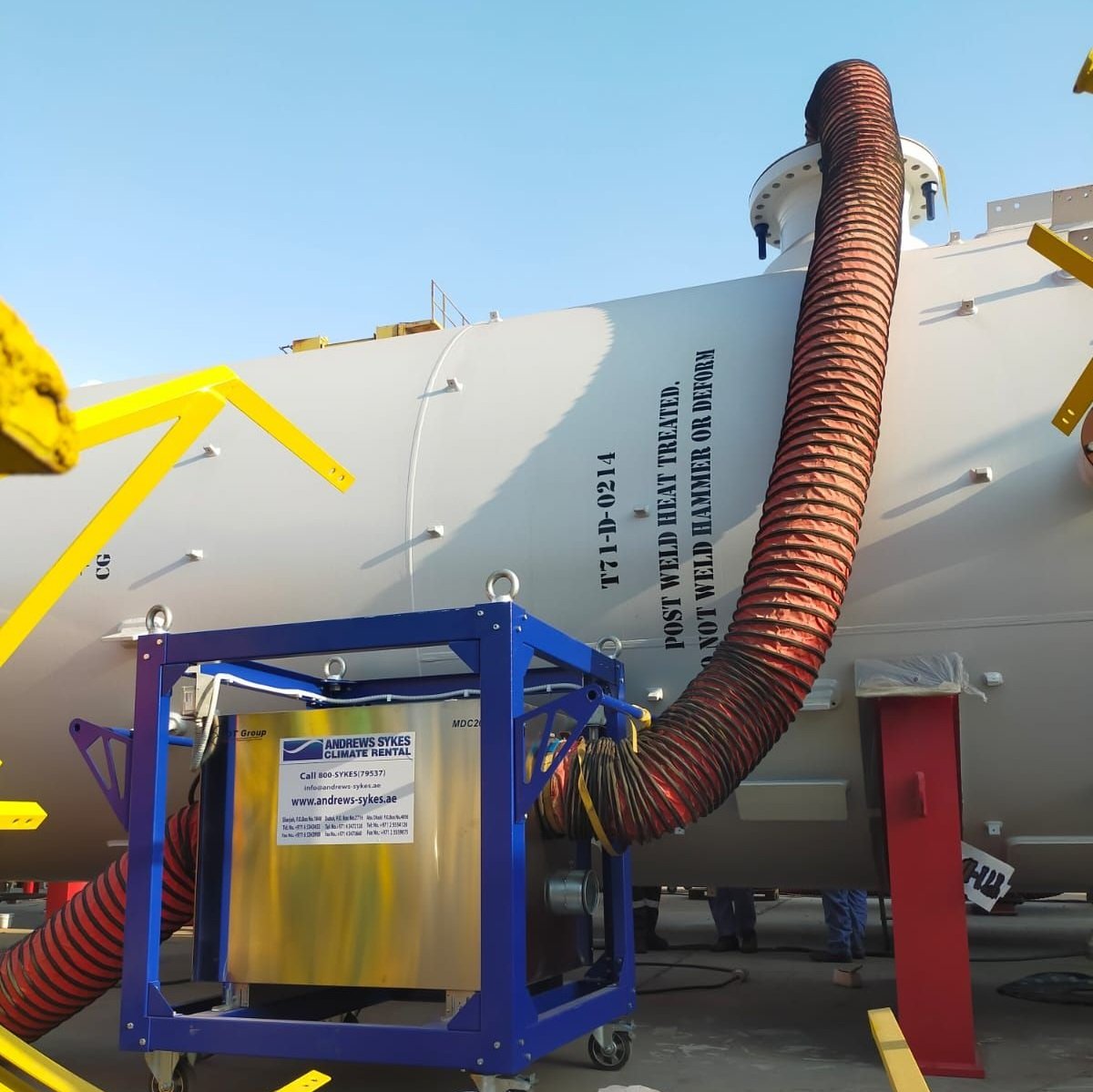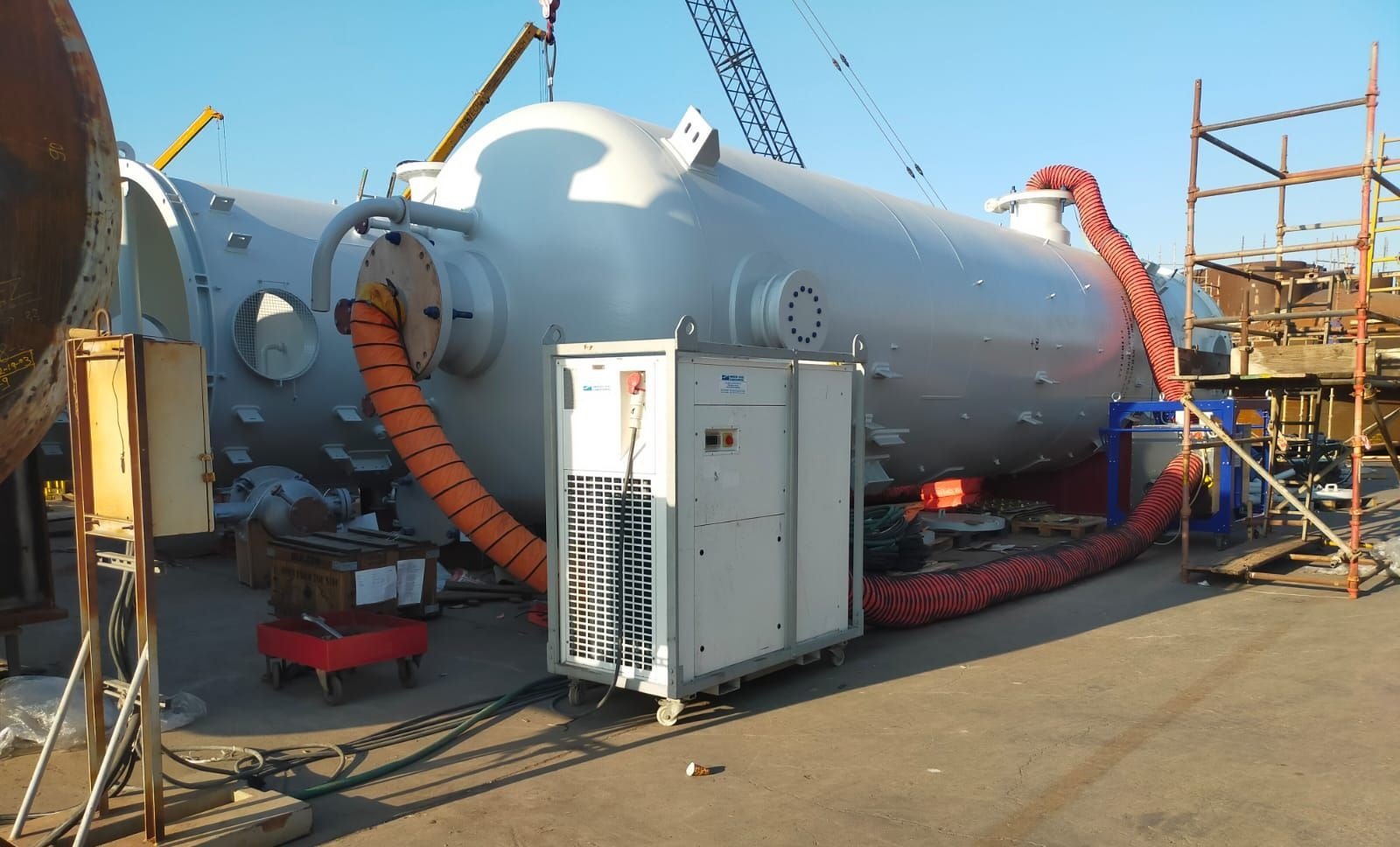Tank drying is a critical process in many industries, particularly in the manufacturing and storage of chemicals, petroleum products, and other liquids. This process involves the removal of moisture or other residual fluids from the inside of tanks, pipelines, or other containers before they are filled or used for storage.
The temperature at which tank drying is performed is an essential parameter that must be carefully controlled to ensure the quality and integrity of the tank and the stored product – and that’s where we come in!
Clients in the oil and gas industries regularly turn to us for our drying expertise, with applications often presenting an additional challenge when we are required to achieve negative dew point temperatures of -1˚C or less.
Dew point temperature is the temperature at which moisture present in the air will start to condense. A negative dew point temperature means that the air is very dry, and it can hold more moisture before it reaches the point of saturation.
With tank drying, a negative dew point temperature is often required to prevent the moisture from condensing on the surface of the tank, which can lead to corrosion or other damage. By using air with a negative dew point temperature to dry the tank, the moisture in the tank’s air can be reduced to a level where it will not condense on the surface.
Negative dew point temperatures can be achieved through various techniques, including using a desiccant dehumidifier in conjunction with a source of cooling. In this instance, we recommended deploying our KT2200 dryers alongside two of our HPAC30 air conditioning units, with our solution proving to be precisely what was needed!
We take pleasure in satisfying the demands of our customers, no matter how unique, and this is what drives us to be considered the Middle East’s leading HVAC rental service provider.


